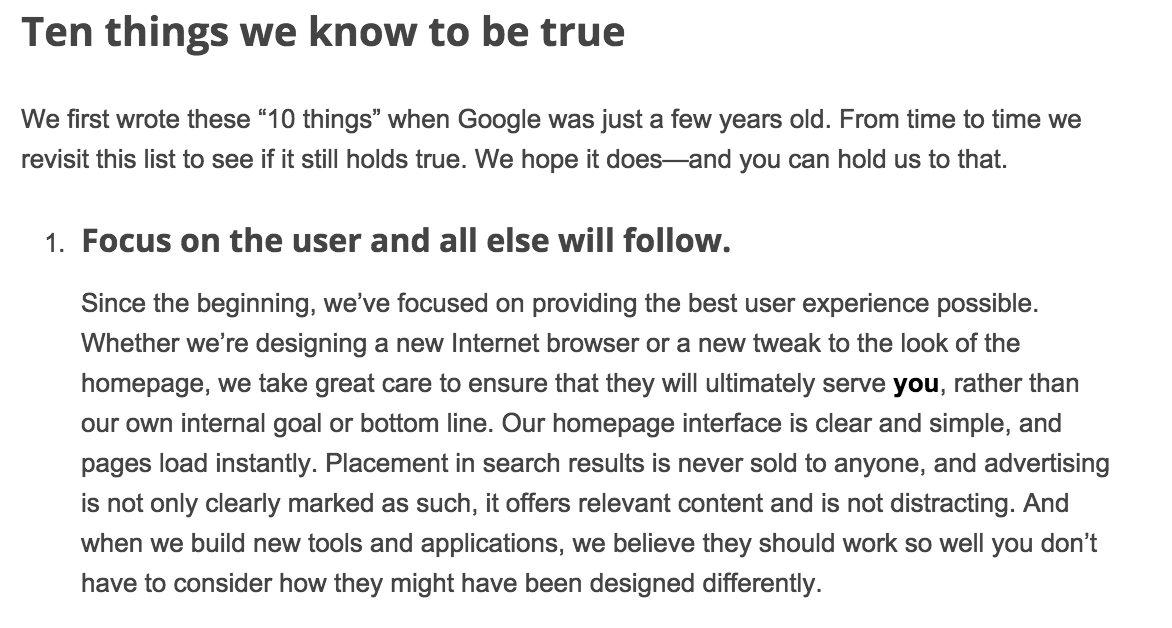
While everyone was focused on optimizing their non-responsive websites for mobile the past month, Google quietly rolled out an algorithm tweak that was detrimental for some websites.
HubPages, a website with a collection of more than 870,000 miniblogs covering everything under the sun, was one of those adversely effected by the secret update.
“On May 3rd, our Google traffic compared to the prior week was off by 22 percent across all of HubPages,” HubPages’ CEO Paul Edmundson, said in a blog post published earlier this week.
While Google isn’t confirming or denying that there was an update, they did confirm it was not a Panda or Penguin update and that they “push changes” all the time so this sort of thing was “normal.”
Glenn Gabe, digital marketing veteran who manages numerous sites and has access to loads of data, took to his blog and confirmed that there was definitely a Google update. He’s deemed it “Phantom 2.” (You can read about “Phantom 1” here.
“Whatever happened starting on 4/29 was bigger than a normal ‘change,’” he said.
This Isn’t About Mobilegeddon
Gabe says the changes do not appear to be a result of Mobilegeddon, as most of the sites hit by Phantom 2 were mobile-friendly. Not to mention, the effect impacted both desktop and mobile rankings.
This week, Gabe took to his blog to share his analyses of websites effected by the update.
“I collected many domains impacted by the 4/29 update and started to analyze the decrease or increase in Google organic traffic,” he said. “I analyzed lost keywords, landing pages from organic search, link profiles, link acquisition or loss over the past several months, etc. My hope was that I would surface findings that could help those impacted.”
Here is a shortened version of Gabe’s findings.
Quality Trumps Quantity
Like Phantom 1, Gabe discovered the trend revolved around content quality issues, finding that the majority of websites effected lacked quality content.
Another key trend that popped up across sites effected was that they had already been hit by Panda previously.
Here’s the list of content quality problems Gabe discovered.
Tag Pages Suck
“One of the biggest hits I saw revealed many tag pages that were ranking well for competitive keywords prior to the update. The pages were horrible,” he said. “Like many tag pages, they simply provided a large list of links to other content on the site. And when there were many links on the page, infinite scroll was used to automatically supply more and more links. This literally made me dizzy as I scrolled down the page.”
This means that the user experience sucked, i.e. poor user engagement, which is deadly if Phantom is like Panda.
The site he was analyzing had 12 million tag pages on the site indexed by Google. If this wasn’t bad enough, the site was spamming visitors with popups on all of its landing pages.
Click-Bait, Skeleton-Like Content and Low Quality Supplementary Content, Oh My!
And then there were more content quality problems.
Gabe discovered many of the top landing pages that dropped from organic search were home to awful click-bait articles.
Additionally, they revealed thin pages of articles of only a few paragraphs.
If that wasn’t bad enough, the main content was engulfed by a myriad of low quality supplementary content.
Supplementary content is stuff like ads, similar/recommended articles, sidebars, etc, and Google measures the level of this content on every page.
The last thing you want is for your site to provide a poor user experience, and poor supplementary content can easily do just this.
What else killed these websites? Stacked videos.
“Low quality pages with many stacked videos can have a strong negative impact on user experience,” Gabe wrote.
Lastly, these sites had a syndication problem, meaning it was consistently using third party sites’ content on its own pages, which was pulled from those sites.
Bad Design

“First, the site design was out of 1998. It was really tough to get through the content,” Gabe said. “The font was small, there was a ton of content on each page, there were many links on each page, etc. I’m sure all of this was negatively impacting the user experience.”
Low Quality User Generated Content (UGC)

Gabe found “worthless” comments or ones that were “just old.”
“I found comments from years ago that had nothing to do with the current situation. And then you had comments that simply provided no value at all (from the beginning),” he said.
Comments do comprise the content on the page; therefore, you most definitely do not want a lot of crappy comments.
Content Farms Combined With Spammy Popups and Knowledge Graph Answers

Content farms are websites that rely on skeleton-like pages that don’t really cover the content Googled for. Oh, and they also have ads smeared across the screen.
If the user experience wasn’t bad enough, it gets even worse when you sprinkle awful popups, low quality supplementary content, ads that blend with the results and low quality UGC.
“When checking the drop in rankings across keywords, I often came across queries that yielded knowledge graph answers… The site has over 100K pages with content targeting ‘what is’ queries,” Gabe said. “And many of those queries now yield Knowledge Graph (KG) answers. When you combine a ranking shift with a knowledge graph result taking up a large portion of the SERP, you’ve got a big problem for sure.”
Linking to Spammy Sites
He also discovered that many of the effected landing pages had a bulk of prominent links to text ads, i.e. sponsored ads, which then led to more spammy linked pages.
Recommendations for Phantom 2 Victims

Here’s what you should do if Phantom 2 killed your website:
- Conduct a qualitative content audit immediately.
- Based on your analyses, write out a strategy for fixing these issues ASAP.
- Ensure you understand which queries and landing pages, which used to receive a lot of traffic, dropped from SERPs.
Conclusion

Really, I’m shocked that so many websites are so surprised that this happened to them if they are doing the things Gabe describes in his post.
While you don’t need to memorize Google’s 200 ranking factors, you should know by now that quality content is king. Black-hat SEO tactics are dead so stop trying to game Google.
All you have to do is provide value to searchers. It will take longer, but it’ll also ensure you aren’t exiled by Google in the future.
Which path will you choose?
 Lauren Holliday
Lauren HollidayLauren Holliday is a full-stack marketer.



